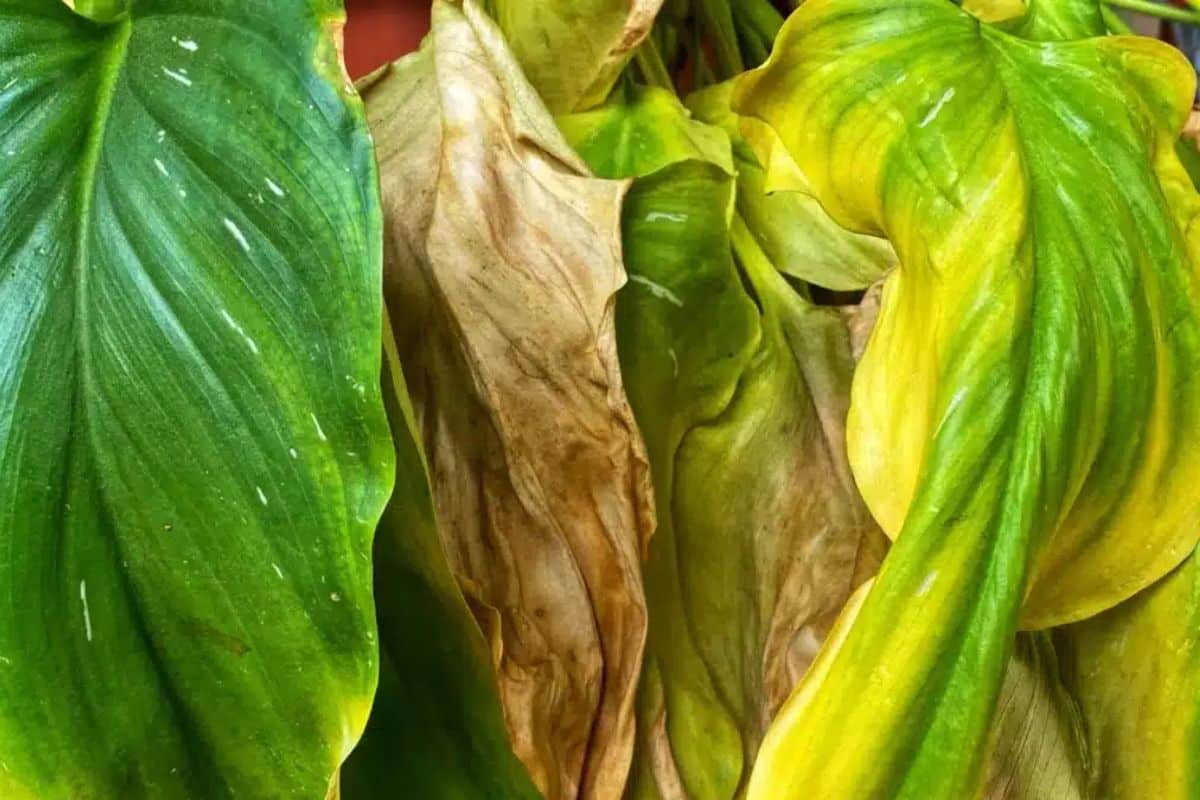Discovering brown tips on your beloved plants can be concerning. This common issue affects many indoor and outdoor plants, leaving gardeners puzzled about the cause. Brown leaf tips often signal that your plant is experiencing stress from its environment. Understanding the underlying reasons and implementing the right solutions can help restore your green friends to their vibrant, healthy state. Let’s explore why leaf tips turn brown and how you can effectively address this problem.
Common causes of brown leaf tips in plants
When plants develop brown tips, they’re essentially communicating that something in their growing conditions isn’t optimal. Environmental stress factors often manifest as browning at the leaf margins before affecting the entire leaf. Identifying the specific cause is crucial for implementing the right solution.
Water-related issues rank among the most frequent culprits. Both underwatering and overwatering can lead to brown leaf tips, though the accompanying symptoms may differ. Underwatered plants typically have crispy, dry brown tips, while overwatered specimens might show softer, darker discoloration accompanied by yellowing.
The humidity level in your home plays a significant role as well. Many popular houseplants originate from tropical regions where humidity levels remain consistently high. Modern homes, particularly during winter months when heating systems run frequently, often have extremely dry air that stresses moisture-loving plants.
Soil quality and mineral content can also trigger brown tips. Excess fertilizer buildup creates a high concentration of salts in the soil, which damages delicate root systems and prevents proper nutrient uptake. Over time, this salt accumulation manifests as browning leaf margins.
Here are the primary causes of brown leaf tips:
- Inconsistent watering practices
- Low ambient humidity levels
- Excessive fertilizer application
- Poor-quality or inappropriate soil mix
- Nutrient deficiencies (particularly magnesium, calcium, or iron)
Effective solutions for treating brown leaf tips
Addressing brown leaf tips requires a methodical approach based on identifying the underlying cause. While the damaged portions won’t return to green, proper care adjustments will prevent further browning and allow new growth to emerge healthy.
For humidity-related issues, several solutions exist. Using a humidifier near your plants can dramatically improve their environment, especially during dry winter months. Alternatively, grouping plants together creates a microclimate with higher humidity levels as plants naturally release moisture through transpiration. Pebble trays filled with water placed beneath pots provide localized humidity without risking root rot from excessive direct moisture.
Watering practices often need refinement. Rather than following a strict schedule, check the soil moisture level by inserting your finger about 1-2 inches deep. Most houseplants prefer drying slightly between waterings. When you do water, ensure thorough saturation until water flows from drainage holes, then allow excess to drain completely.
For salt buildup issues, leaching the soil can provide immediate relief. This process involves thoroughly flushing the soil with distilled or filtered water several times to dissolve and remove accumulated mineral salts. Following this treatment, reduce fertilizer application frequency and concentration to prevent recurrence.
If nutrient deficiencies are suspected, consider these approaches:
- Switch to a complete, balanced fertilizer appropriate for your plant type
- Adjust soil pH if necessary to improve nutrient availability
- Consider specialized supplements for specific deficiencies
- Repot with fresh, high-quality potting medium if soil is depleted
| Symptom | Likely Cause | Recommended Solution |
|---|---|---|
| Crispy brown tips with yellow edges | Low humidity | Increase humidity with humidifier or pebble trays |
| Brown tips with curling leaves | Underwatering | Adjust watering frequency based on soil moisture |
| Brown tips with yellow/soft leaves | Overwatering | Reduce watering, improve drainage |
| Brown tips with white crust on soil | Salt/fertilizer buildup | Leach soil, reduce fertilizer application |
Preventative measures for healthier plants
While treating existing brown leaf tips is important, preventing future occurrences ensures long-term plant health. Regular plant maintenance routines significantly reduce the likelihood of stress-related symptoms like brown tips.
Understanding each plant’s specific needs is fundamental. Research your plant varieties to learn their preferred light conditions, watering requirements, and humidity preferences. Tropical plants generally need higher humidity than desert-native succulents or cacti, which have evolved to thrive in arid conditions.
The quality of water you use matters tremendously. Many municipal water supplies contain chlorine, fluoride, and dissolved minerals that can accumulate in soil over time. Consider using filtered, distilled, or collected rainwater for sensitive plants, especially if you notice recurring brown tips despite other care adjustments.
Seasonal care adaptations are essential as well. Plants’ needs change throughout the year as growth rates, light levels, and indoor conditions fluctuate. Most houseplants require less water and little to no fertilizer during winter dormancy periods when growth naturally slows.
Finally, consider your plant placement carefully. Keep sensitive specimens away from heating vents, air conditioners, and drafty windows that create temperature fluctuations and dry air currents. The micro-environment immediately surrounding your plant significantly impacts its ability to thrive without stress symptoms like brown leaf tips.
By implementing these preventative measures and responding promptly to early signs of stress, you’ll enjoy healthier, more vibrant plants with beautiful, intact foliage throughout the seasons.

